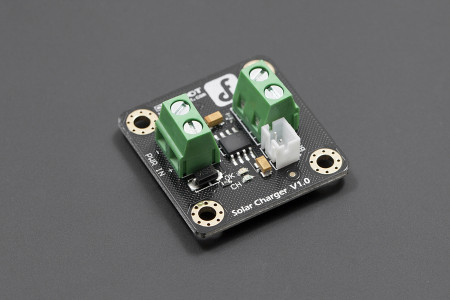Lopy Power conditioning question
-
Hi, I have been trying to get the LoPy to run with only solar cells. no battery, only solar cells and 3.3v regulator.
The circult runs just fine when powered by a bench power source supplying 5v-6v to the Regulator. The lopy comes up with the Heartbeat LED. All Good.
However, When I run it with 6v-7v dc coming form a solar cell I see the 3.3v after the Regulator but the lopy does not init and no heartbeat LED is ever shown
Are there any special requirments for the LOPY vIN? Maybe some smoothing of threhsold that I may be getting from the bench supply that I need to add to the Solar?
I'm in over my head here. I appreciate any solutions you send my way.
Thanks,
Garth
-
Why would you want to run your device directly from a solar cell? You will need a much larger panel/ device and it will be extremely weather dependant.
Stop torturing yourself and get a tiny solar charger and a lipo battery, and
Plug this into the battery port of the board, and you are done!
-
@thrag
It depends what is the "work" and for how long it runs. If it involves WiFi or Bluetooth you need at least a sustained 120mA@3.3V. The problem is typical rechargeable lithium coin cells (LIR2032) have a maximum discharge current of 70mA and ideally work with loads of 20mA so even with a pair of those you're cutting far too close - realistically you need more than two.If you can live with it go for Li-Ion batteries (maybe a protected 18650 cell for added safety, I hate those plastic wrapped Li-Po packs) or even 3 or 4 NiMh AAs - those can supply those demands easily.
There is also the matter of the peak current demands, I've measured 700mA@3.3v peaks at startup so you definitely should throw some capacitors in there in addition to the batteries.
If it's a really short job you could consider supercaps. I've tested a small (16x16x12mm sort of volume) 3 Farad ~5V supercap bank for powering the LoPy and that lasts 26s from power on until it gets too low - this was with WiFi on - you'll get more runtime if you go through a boost converter. The advantage is they can supply all those peaks easily, you don't need anything else, it's really simple.
I was using a special energy harvesting chip to charge the supercaps in that experiment but there are many MPPT style circuits out there that would do the job.
-
Thanks @jmarcelino. I really only need the lopy to wake up once a day and do it's work. I was hopping I could just let it wake up any time the sun was bright enough and go back to sleep when it got dark. Like Me.
I guess it is not that simple. I had a look at the MPPT page. I'll need to study that closely but I get the general concept now.
My backup plan is a pair of rechargeable lithium coin cells (size is a consideration here) and a charge circuit. Do you think that is reasonable? Would you know and good resources to help me find suitable charge circuits.
I've seen off the shelf modules that should do this (Inlcuding the Lopy Expansion board) but as I say size and cost are a consideration here.
Thanks again for any advice you may have.
-
@Emmanuel-Goudot 400ma. Wow. That may be it. I Had read 12ma in Active Mode. So I budgeted 90ma@ and 5v. I've tried 4 of them in parralle and measured it at 320ma. I have one more to add but that would still just get me to 400.
-
@thrag
The LoPy has a rather big startup current (partly to do with ESP32 RF calibration) so you realistically do need some kind of storage, either batteries or a capacitor bank even when using solar.Also having storage lets you better optimize your load to the solar panel - read up on MPPT. A simple regulator won't do the job properly.
Without these you'd need a massive panel - larger than 1㎡ - if it works at all.
The 3.3v you see on your regulator is probably open circuit, in other words no load connected to it just your multimeter. If you measure it with the LoPy connected you'll probably have a very different result. Try it, especially after you press the reset button on the LoPy.
There are also many optimisations you can do to lower the initial and runtime power consumption, disabling WiFi/BT and/or RF calibration at startup would be a big one. Lowering clock speed.. but these have to be done at the lowest level with a custom firmware image.
Solar power/energy harvesting is a fairly advanced topic and the LoPy is a very complex device in terms of power profiles to learn it from. I'd suggest starting with something simpler and much lower power, for example try powering an Arduino from solar to learn the basics as there are resources on it already.
-
How much max current can provide solar cell ?
I think ESP32 nees something like 400mA when starting...